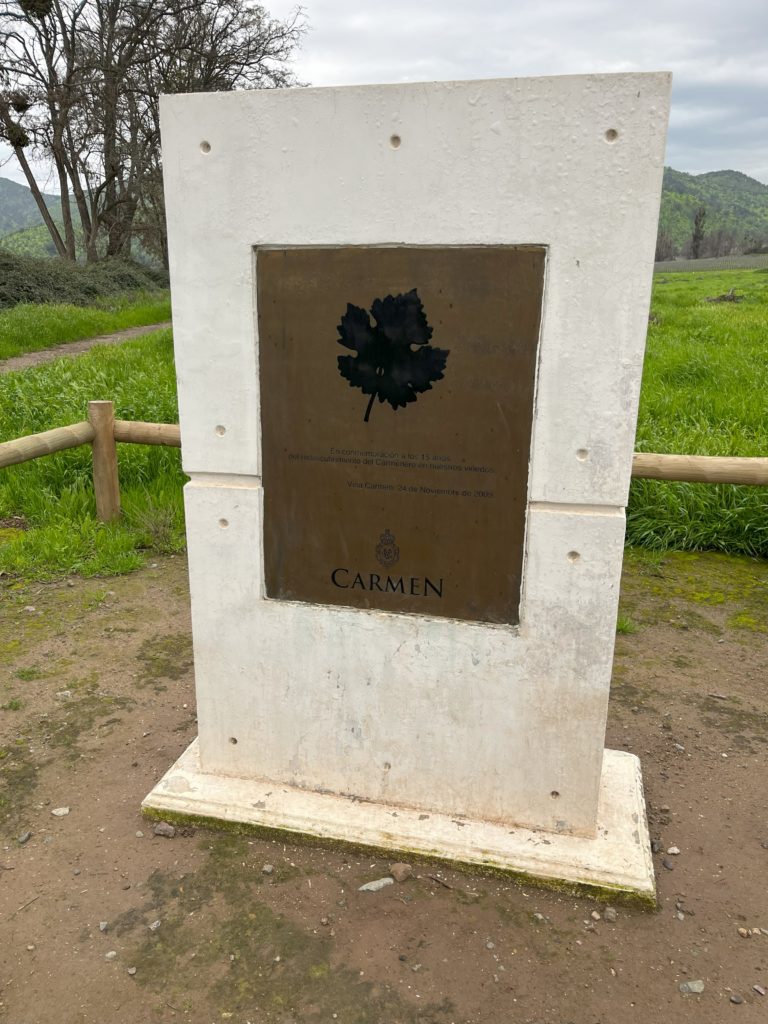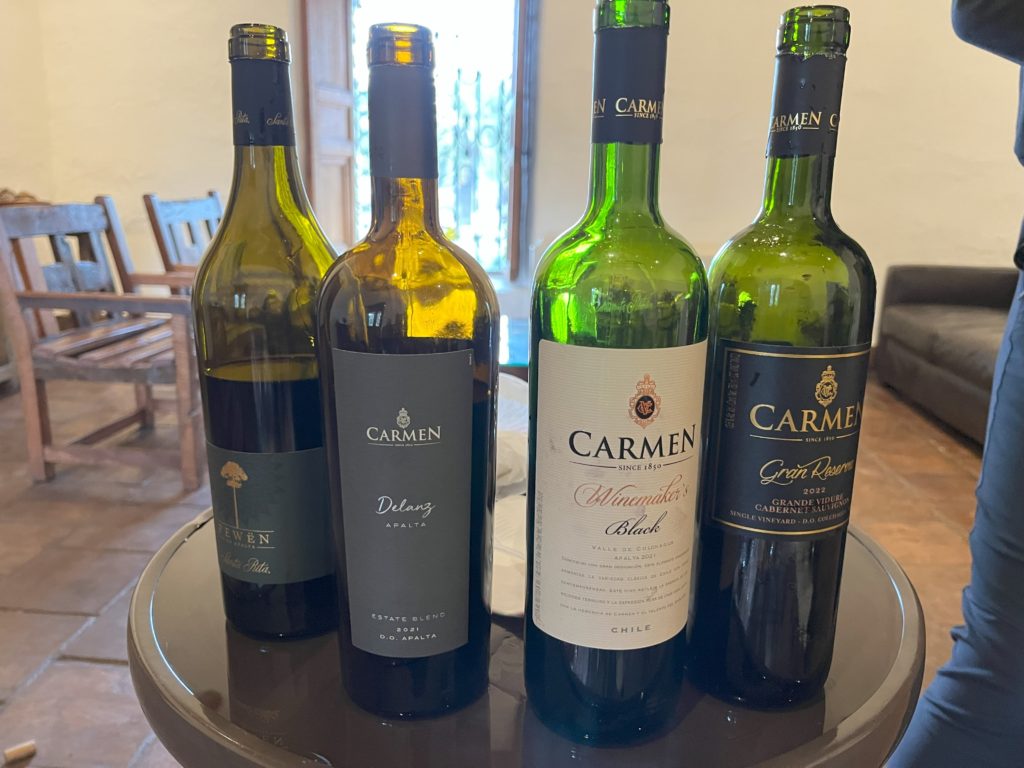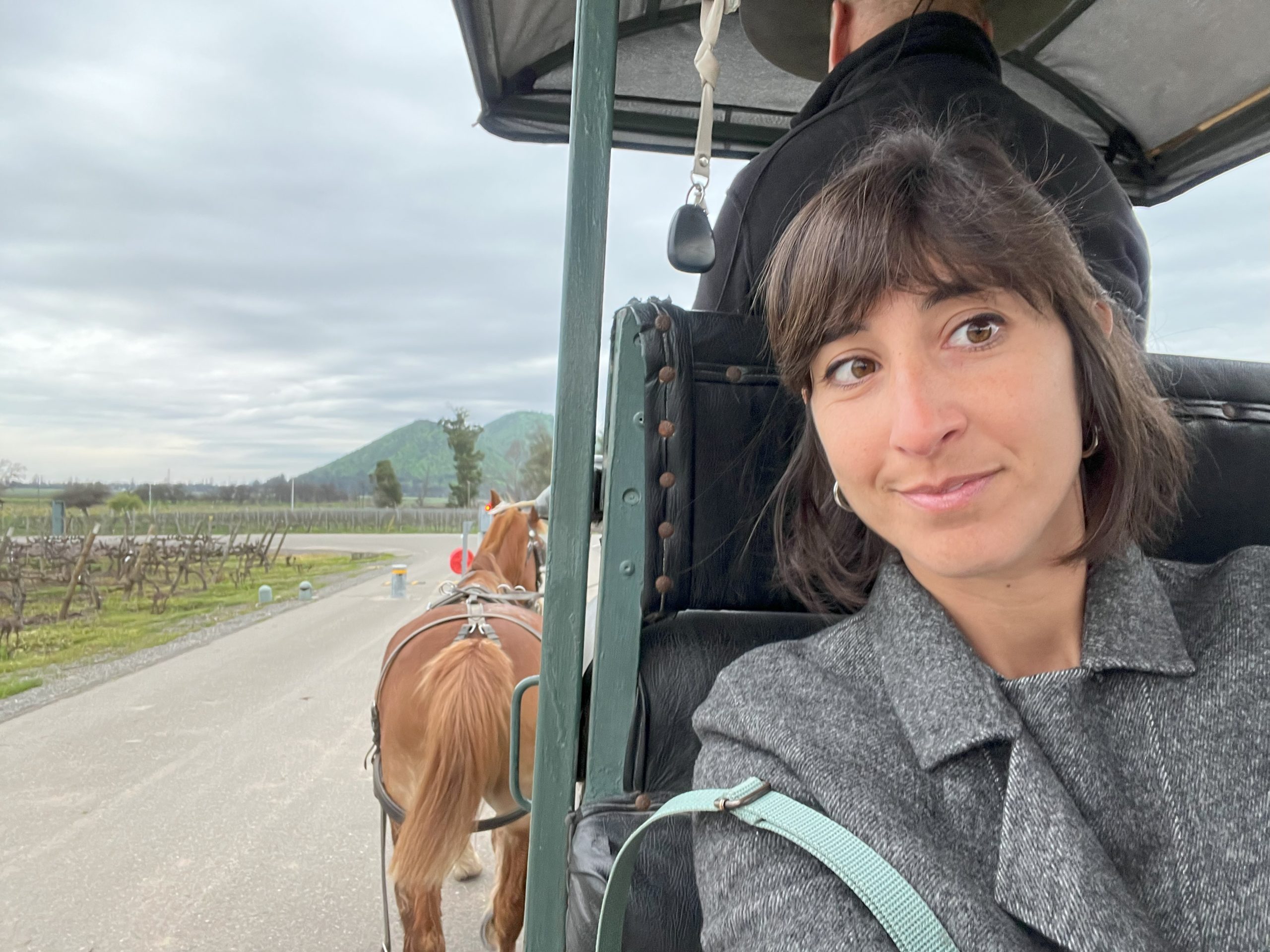I can’t picture the face of Chileans when after calling what it was Carménère grapes “Merlot” for years and years, they finally discover they were mistaken this whole time!
We can say that the story of Carménère in Chile starts with a mistake. Brought by European winemakers who migrated to Chile around 1850, Carménère was planted next to Merlot and Cabernet plants. For some reason, it was confused with them until 1994 when a French winemaker, after some DNA tests, revealed the truth to the world!
But what is this Carménère? Also known as “Grand Vidour”, it was first planted in France but became extinct after the phylloxera epidemic in the 19th century. The name comes from “carmine”, a type of red.
It’s infact a red grape variety, with aromas of raspberry and plum, bell pepper, paprika and vanilla in its oaked version.
It’s a medium body wine, normally fresh and fruity when young, with moderate acidity, tannins and alcohol. With Cabernet shares its green, spice and peppery notes, with Merlot the red fruit notes. Carménère can also become very earthy and leathery with age.
Carménère representes the 10% of the Chilean wine production and the 85% of the Carménère in the world comes from Chile. A fun fact is that the second producing country of this grape variety is China, where it is named “Cabernet Gernischt”.
When I traveled through Chile in 2023, I had the chance to visit the two main wine regions where Carménère is grown: Colchagua Valley and Maipo Valley. In general, the wines from Calchagua Valley are greener and with more spices thanks to the altitude whereas the Maipo ones are fruitier.
When in Maipo, I went to one of the oldest wineries in the country, Viña Santa Rita, and after a short carriage ride among the vineyards, we got to the plaque that marks the place where Carménère was re-discovered.

I then tasted 4 different kinds of Carménère, mostly from their premium collections (including their top notch Pewën).

I personally feel that, wine speaking, Chile is a misunderstood country. The country is the 4th largest wine exporter in the world but what they export is definitely not their best expression.
If you are interested in knowing where to find the best wines in Chile and which are the places to avoid, write me an email: sipwithcarlotta@gmail.com
Salud!
[all pictures were taken during my Carménère tour at Viña Santa Rita on September 2023. For more info about the tour: https://santaritaonline.com/tour/carmenere/]


Leave a Reply